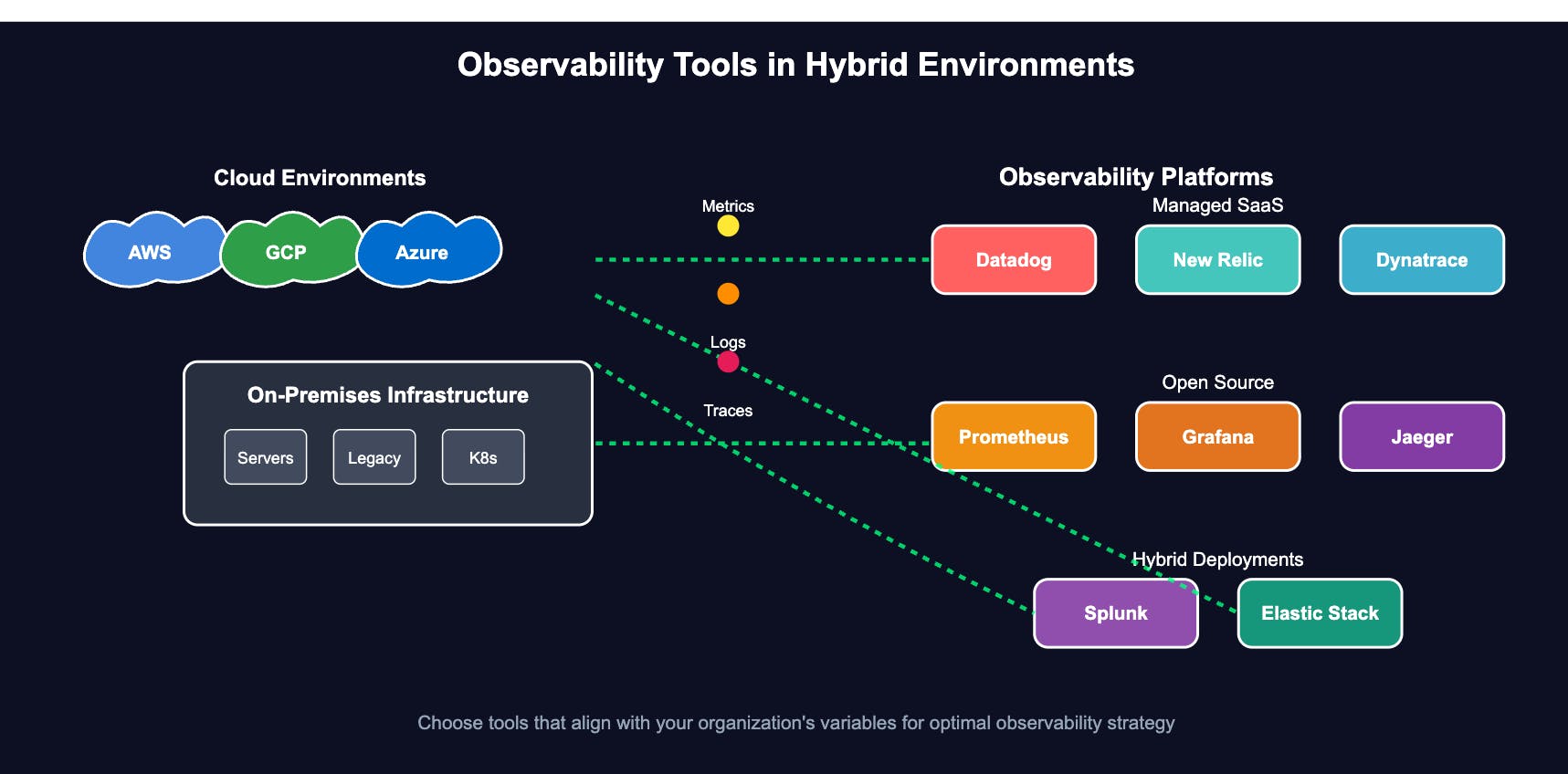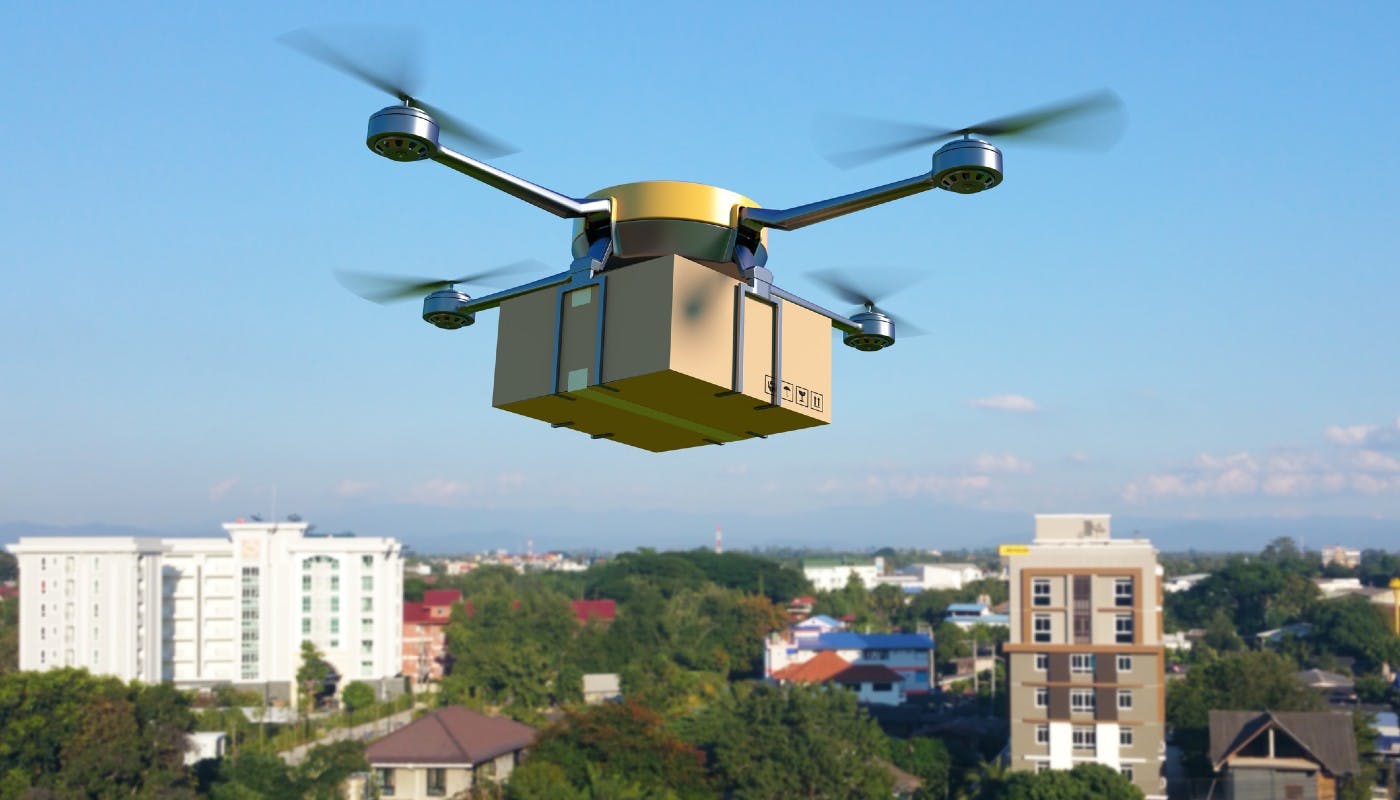The observability landscape has exploded with options—from open-source solutions like Prometheus and Grafana to enterprise platforms like Datadog and New Relic. While this abundance of choice empowers teams to find tools that fit their specific needs, it also creates a new challenge: selecting the wrong observability platform can derail your monitoring strategy, leading to costly delays, poor system visibility, and frustrated engineering teams.
For DevOps engineers, SREs, and platform teams tasked with evaluating these tools, the “right” choice isn’t universal—it depends on your infrastructure complexity, team size, budget constraints, and long-term scalability requirements. Whether you’re a startup building your first monitoring stack or an enterprise consolidating multiple observability vendors, understanding how to systematically evaluate and compare these platforms will save you from expensive mistakes and ensure your observability strategy actually delivers the insights your organization needs.
Current Landscape
The observability market has consolidated around several key players, each with distinct strengths according to technical analysts. Gartner’s 2024 Magic Quadrant for Observability Platforms identifies Datadog, New Relic, and Splunk as leaders, with Dynatrace positioned highest in Ability to Execute and furthest in Completeness of Vision. The enterprise landscape includes comprehensive platforms like Dynatrace (praised for automated setup and AI-driven insights but criticized for complex UI and learning curve), Datadog (valued for extensive integrations and unified dashboards but noted for aggressive pricing), and New Relic (recognized for developer-friendly interfaces but with mixed reviews on enterprise scalability). Open-source alternatives like Prometheus and Grafana offer cost-effective solutions with strong community support, though they require more hands-on configuration and maintenance. User reviews consistently rate these platforms between 4.4-4.5 stars, suggesting that while features vary significantly, most mature platforms deliver solid performance when properly implemented, making the selection process more about fit than fundamental capability gaps.
Understanding these variables individually helps clarify why they matter so much in your decision process.
-
Company size fundamentally shapes your resource constraints and operational complexity—a 10-person startup can’t dedicate engineering hours to maintaining Prometheus clusters, while a 500-person enterprise might find Datadog’s per-seat pricing prohibitive.
-
Budget extends beyond just tool licensing to include hidden costs like training, integration time, and ongoing maintenance that can double your total cost of ownership.
-
Implementation strategy reflects your organizational priorities: startups often need immediate visibility to prevent outages, growing companies focus on developer workflow integration to scale their engineering practices, while mature organizations typically seek cost optimization to reduce operational overhead.
-
Tool capabilities range from basic metrics collection to advanced AI-powered anomaly detection, with each tier requiring different levels of expertise and infrastructure investment.
-
Environment integration determines how well your observability stack fits your existing architecture—cloud-native organizations have different needs than those managing legacy on-premises systems or complex multi-cloud deployments.
-
Finally, deployment model affects everything from data sovereignty and security compliance to the engineering skills your team needs to maintain the system effectively.
Variable Relationships & Impact Matrix
|
Primary Variable |
Directly Influences |
Key Considerations |
|---|---|---|
|
🏢 Company Size |
Budget, Strategy, Environment |
Small teams (1-50) → Simple tools, predictable costs Growing teams (51-200) → Integration focus Enterprise (200+) → Advanced features, compliance |
|
💰 Budget |
Deployment Model, Tool Capabilities |
Limited budget → Open source bias |
|
🎯 Strategy |
Deployment Model, Integration Needs |
Quick wins → Managed SaaS |
|
🔧 Deployment Model |
Capabilities, Maintenance Overhead |
Managed → Higher costs, less control |
|
⚙️ Tool Capabilities |
Budget Impact, Learning Curve |
Basic monitoring → Lower cost, faster adoption |
|
🔗 Environment |
Integration Complexity, Vendor Lock-in |
Cloud-native → Modern tooling options |
Decision workflow chart
Decision Flow Patterns
🚀 Startup Pattern: Small Size → Tight Budget → Quick Implementation → Managed Solutions → Basic Capabilities
📈 Growth Pattern: Medium Size → Flexible Budget → CI/CD Strategy → Hybrid Approach → Advanced Features
🏭 Enterprise Pattern: Large Size → Substantial Budget → Cost Optimization → Custom Deployment → Full Capabilities
Conclusion
The key to successful observability tool selection lies not in finding the “best” platform, but in understanding which combination of variables matters most for your specific context. A startup might prioritize speed and simplicity over cost efficiency, while an enterprise team might accept complexity in exchange for granular control and cost predictability. Rather than getting overwhelmed by feature comparisons and vendor marketing, focus on mapping your organization’s reality against these six variables. This systematic approach will guide you toward tools that not only meet your technical requirements but also align with your team’s capabilities, budget constraints, and strategic objectives. In the following sections, we’ll dive deeper into each implementation strategy and provide practical frameworks for evaluating platforms against your specific variable combination, turning what feels like an impossible decision into a structured, defensible choice.













